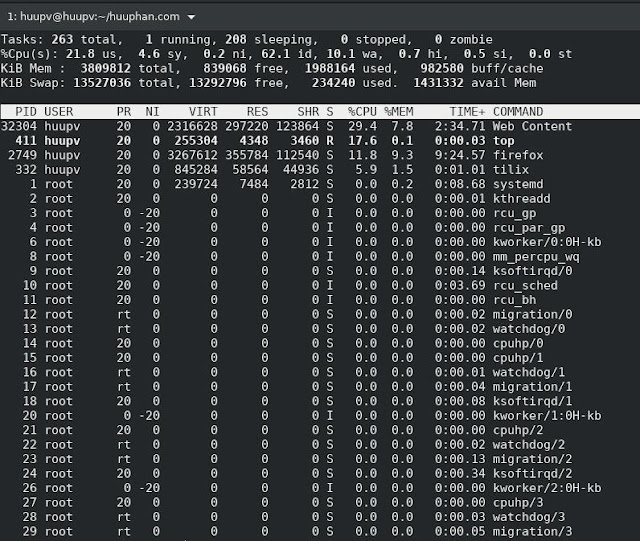top command in linux
I guide to the Linux "Top command". The top command allow monitor processes and system resource usage on Linux. It is a best tools for system admin.
The screen output terminal as below
Top command in linux
Getting start top command
you can type "top" in terminal very simple.[huupv@huupv huuphan.com]$ topIf you want to quit, then press "q"
The screen output terminal as below
Top command usage example
How to killing processes, sorting the process list, showing full paths, forest view and Listing processes from an user.Killing processes
you want to kill a process, press "k" when top command is running and ask for the process ID and press enter. If you leave the process ID blank and hit enter.Sorting the process list
The most frequent reasons to use a tool like top is to find out the consuming the most resources. you can press key for sorting list.- ‘M’ to sort by memory usage
- ‘P’ to sort by CPU usage
- ‘N’ to sort by process ID
- ‘T’ to sort by the running time





Nice article, Which you have shared here about the Linux top commands. Your article is very informative and useful for those who are interested to know more about the various Linux commands. If anyone looking for the Linux Screen Command, Visit linoxide
ReplyDelete